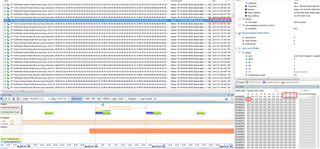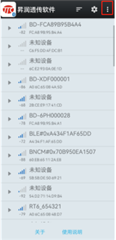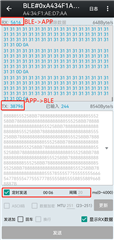The test process is that after the 2340 module is connected to the mobile phone, the connection interval is 15~20ms, the APP sends 244 bytes of data to the module at a regular 20ms, and the module sends 244 bytes of data to the APP at a regular 20ms. When the module sends data to the APP, the APP receives twice when it occasionally sends 1 packet of data. When the module calls GATT_Notification, the number of bytes sent is recorded. The simulation shows that the total number of bytes sent is less than the total number of bytes received by the APP (that is, the APP receives more data than the module sends). The first 4 bytes of the data sent by the module are the cumulative number of sent bytes, and each sent 1 group adds 244 bytes, as follows:











